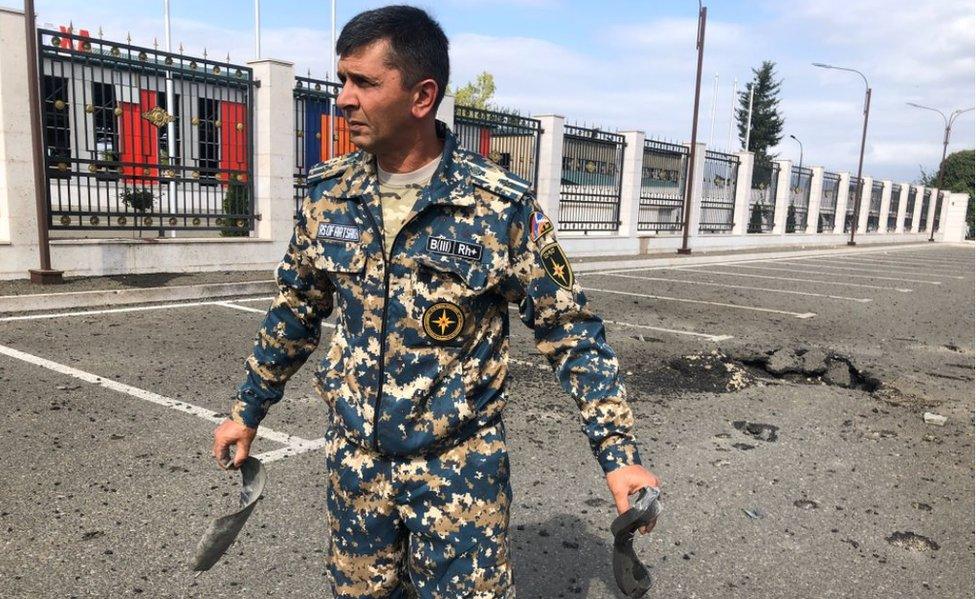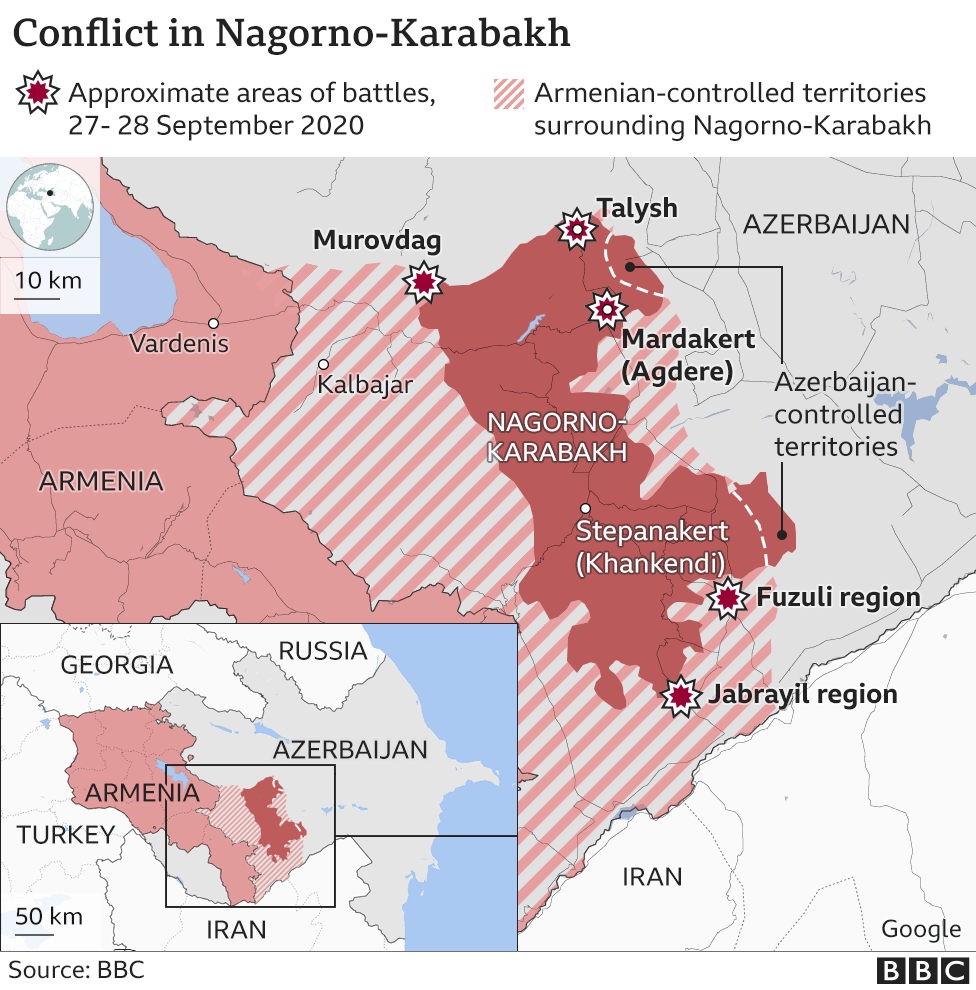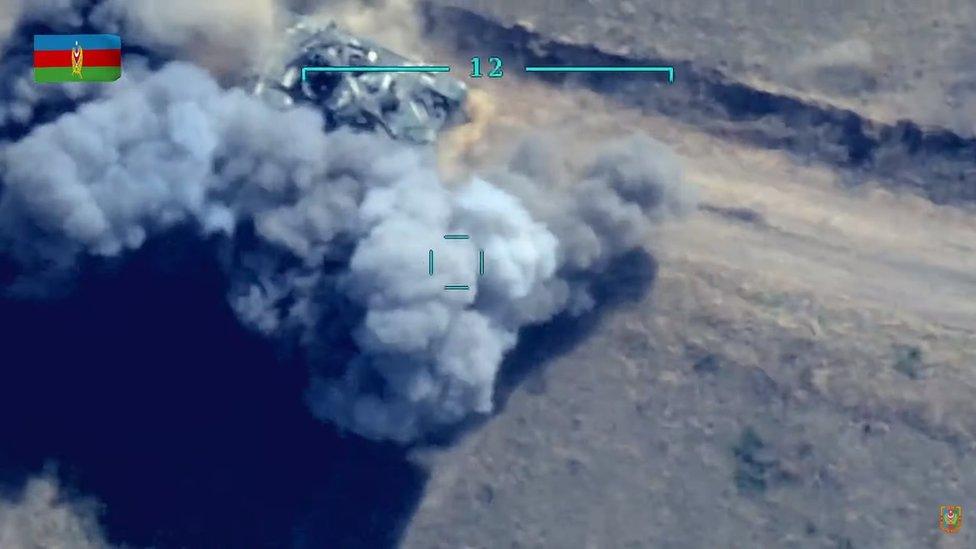Nagorno-Karabakh conflict: Armenia 'ready' for ceasefire talks
- Published
The BBC's Jonah Fisher: "People here are understandably nervous"
Armenia's foreign ministry has said it "stands ready to engage" with France, Russia and the US on halting six days of fighting with its neighbour Azerbaijan.
Casualties have mounted in the southern Caucasus with both sides accusing each other of launching deadly attacks.
The conflict around the disputed territory of Nagorno-Karabakh erupted on Sunday.
The enclave is officially part of Azerbaijan but run by ethnic Armenians.
The two former Soviet republics went to war over the territory between 1988 and 1994, eventually declaring a ceasefire, and they have never reached a settlement over the dispute.
France, Russia and the US, which co-chair the OSCE Minsk mediation group, have called for a ceasefire, but so far Azerbaijan has not given a positive response to proposed talks.
In the latest fighting, Azerbaijan forces said they had made further advances, but accused Armenia of artillery attacks on four villages, causing civilian casualties.
Armenia says it has shot down seven drones flying near the capital, Yerevan, but the claim has been rejected by Azerbaijan.
What hope of a ceasefire?
In a joint statement on Thursday, the presidents of France, Russia and the US called for an "immediate cessation of hostilities between the relevant military forces".
Armenia's foreign ministry responded on Friday, external, saying it was ready to engage with the three OSCE Minsk Group co-chairs "to re-establish a ceasefire regime based on the 1994-1995 agreements".
Azerbaijan President Ilham Aliyev has so far rejected talks, and his main ally, Turkey, has said a lasting ceasefire depends on "Armenians' withdrawal from every span of Azerbaijani territory".

At the scene
By Jonah Fisher, BBC News, Nagorno-Karabakh
Here in the regional capital Stepanakert, all eyes are on the skies, looking for any sign of the Azerbaijani military drones that have been such a feature of this first week of hostilities.
Nowhere feels safe in Nagorno-Karabakh.
It's about 30km (19 miles) from Azerbaijani positions to Stepanakert, and drones have struck here several times in the last few days. The drones also appear to be identifying targets here for artillery fire.
At regular intervals today we heard the sound of missiles landing. At lunchtime the explosions were louder. A rocket had come down just in front of a government building on the outskirts of town.

An officer in Stepanakert shows parts of a rocket that came down near the emergency service department
When we arrived, the soldiers were pulling pieces of what they said was an Israeli-built rocket out of the tarmac. All the windows of the nearby buildings had been blown out. Several people had been injured but fortunately no-one killed.
Unsurprisingly, many have chosen to leave Stepanakert. We're told lots of the men have gone to the frontline while families have been sent in the other direction towards the Armenian capital Yerevan.


Nagorno-Karabakh - key facts
A mountainous region of about 4,400 sq km (1,700 sq miles)
Traditionally inhabited by Christian Armenians and Muslim Turks
In Soviet times, it became an autonomous region within the republic of Azerbaijan
Internationally recognised as part of Azerbaijan, but majority of population is ethnic Armenian
Self-proclaimed authorities are not recognised by any UN member, including Armenia
An estimated one million people displaced by war in 1988-94, and about 30,000 killed
Separatist forces captured some extra territory around the enclave in Azerbaijan
Stalemate has largely prevailed since a 1994 ceasefire
Turkey openly supports Azerbaijan
Russia has a military base in Armenia

- Published30 September 2020

- Published12 November 2020
